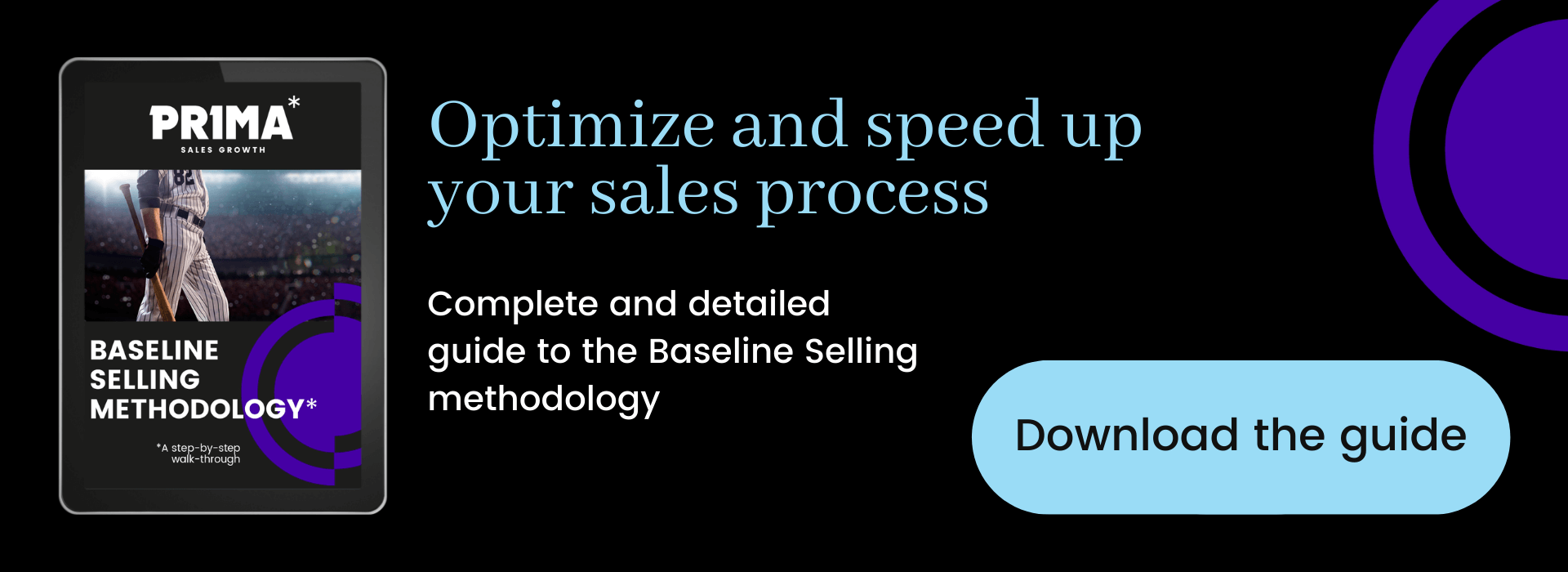Choosing a CRM for your sales team is a crucial decision that impacts sales productivity and performance. Organizations often stop at the same criteria: ease of use, personalization, pipeline visibility, presence of a mobile application, integration with other tools, reporting, contact management and so on.
Of course, all these criteria must be taken into account. But often, the most important criterion is not part of the decision.
This criterion is behavioral change. Because without behavioral change, CRM implementation can be a costly failure.
Why target behavioral change
The idea behind behavior change is to integrate the sales process in the form of a list. This list will include not only operational steps (meeting the customer, sending the quote), but also more conceptual elements (e.g. needs, reasons for buying and customer perception). The aim is to ensure reproducible success throughout the organization, and to focus on activities that generate results.
You can’t simply ask a sales rep to make more sales. Instead, they need to multiply the activities and behaviors that will generate them. The key lies in the regularity of activities that will lead to a sale, and in investing time in activities that pay rather than those that don’t.
Paid activities vary from company to company, but generally include exploratory meetings with new customers or existing customers with a new project. These meetings help identify needs and understand why the customer should do business with your company. The more such meetings you hold, the greater your sales volume.
Prospecting, like calling or other methods, is another activity to be measured, as it leads to exploratory meetings. You need to increase prospecting activities to increase the number of exploratory meetings. Don’t just focus on the number of submissions sent out. Perhaps some submissions are sent to unqualified prospects. Instead, focus on activities that predict success and add value to your sales process.
To measure activities, you need to set targets. If you don’t know where to start, take a look at your team’s historical performance. This analysis will establish the number of exploratory meetings and prospecting calls it took to reach that number of sales. You can then set monthly targets for the number of prospecting calls and exploratory meetings to be carried out.
Understanding the past is the key to knowing the future. By understanding and measuring these elements, the team will grow and perform better.
A good CRM will enable you to set up a process for tracking paying activities, and to have traceability of these activities. As a sales leader, you’ll be able to use it to hold effective pipeline reviews, focused on activities rather than just results.
How to choose the right CRM for your needs
When looking for a CRM, it can be difficult to understand which CRM does what. To make the right choice, you need to identify your company’s specific needs and look for a CRM that meets them.
Take manufacturing companies, for example. Sales are often made upstream, at the design stage, before a project is even approved. In this case, it’s important to measure the number of first-goal meetings at the design stage, rather than the number of tenders submitted.
If the company wants to differentiate itself and focus on added value, it needs to concentrate on activities that predict success at the design conception stage.
Beware of measuring everything. If you start measuring every activity, you run the risk of drowning in a sea of useless information.
For example, if we calculate all sales calls indiscriminately, it becomes difficult to know whether they were follow-up calls, parts orders or prospecting calls to win new customers.
It’s better to focus on activities that are relevant and predictive of success for your business and industry, and choose a CRM that can measure them.
Acquiring a CRM is not enough
You’ve found the perfect CRM to capture your entire sales process and measure all revenue-generating activities. That’s all well and good, but if sales reps aren’t using it and entering the necessary information, the acquisition will have been for nothing.
Buy-in of the sales team is essential. Here are a few tips to help you succeed.
Make CRM use mandatory
Humans are resistant to change and tend to keep their old habits, even if they no longer serve them as well. To ensure that salespeople adopt CRM, its use must be a condition of employment. Be firm and uncompromising: completing the CRM should be as important as arriving on time or returning calls.
Persuading managers
Managers need to be convinced of the importance of CRM and the impact it will have on the organization’s performance and results. If they don’t share this conviction with sales reps, the latter won’t be motivated to use it.
Explaining the “why”
It’s essential to explain to employees why using CRM is important for the company and for their personal success. This will facilitate behavioral change.
Aligning goals
The purpose of using a CRM is to ensure that everyone is aligned with the same strategy and methodology. Explain to sales reps that following the CRM steps and documenting activities in a repeatable way is crucial to the company’s success. If, despite this, there are some who don’t want to comply? Perhaps they should consider aligning themselves elsewhere.
Show personal benefits
If you answer the most important question (what’s in it for me), you’ve won half the battle. Show sales reps how using CRM can improve their results, and therefore their commission. Let them know that using CRM can optimize the way they work, improve their performance and, ultimately, make their dreams come true. Use motivation to encourage CRM adoption.
Implementing a CRM can be a significant investment. Encouraging (or even forcing if necessary) its adoption will ensure that it’s not simply an expense.
CRM, a tool for optimizing sales coaching and performance
In sales, success means closing sales.
When an elite salesperson arrives at an organization, the first question he or she asks is “What’s the magic formula here?” A salesperson who doesn’t sell will quickly look for another job, in three, six, or twelve months.
It’s a sign that salespeople need tools to succeed and achieve their goals. A high-performance CRM enables reproducible performance and provides a sales environment more conducive to success, helping to retain the best players on your team.
Identifying and retaining the best
The ideal CRM is also useful for better coaching your team and finding out who the star players are, as well as the under-performers. It’s a bit like sports.
It can happen that an excellent player has a bad season, even if he’s done everything right in terms of training, diet and sleep. If a team doesn’t look at what’s going on during training, it may tend to release under-performing players or replace them with better ones.
However, if we focus only on results, we can miss the point.
For example, a star player may have scored his goals only because he was lucky. But if you look at him in training, you realize that he’s dragging his feet and not giving his all. Chances are, the following year, his results won’t be up to scratch.
Conversely, a player who’s not getting results, but who’s doing everything right, may need coaching in other areas. That’s why it’s essential to have a clear picture of activities in order to assess the team’s performance and know where to intervene.
Compare results
CRM enables you to compare salespeople’s performance more accurately, taking into account factors such as sales territory and new product development.
For example, a salesperson working in an already well-developed territory may have impressive sales figures. But when you look closely, you may realize that he’s not selling as much as another salesperson working in a new territory and developing a new product. CRM makes it possible to compare these elements and see beyond simple sales figures.
Is it time to reconsider your CRM choice?
Although its implementation can represent a significant initial investment, the long-term benefits of a CRM – such as increased sales, improved customer satisfaction and optimized sales processes – can far outweigh the costs.
A well-designed, easy-to-use CRM can transform your salespeople’s day-to-day activities, helping them to track prospects and customers, schedule appointments and manage their tasks more efficiently.
It will give you better visibility of the team’s individual and collective performance. It will enable you to identify the behavioral changes you need to make to reach your sales targets.
And these changes will bring success, both personally and for the company.
Need advice on choosing the right CRM? Contact us
At PRIMA, we help organizations get the most out of their CRM. It doesn’t matter if you have a CRM that’s little used, not working optimally… or you don’t have one at all. Our mission is to guide you towards a CRM choice that will, above all, enable you to change your sales team’s behaviors to maximize their success-and yours.






